3D GLYCAging Skin
LabSkin advanced glycated reconstructed human skin to test anti-AGE molecules
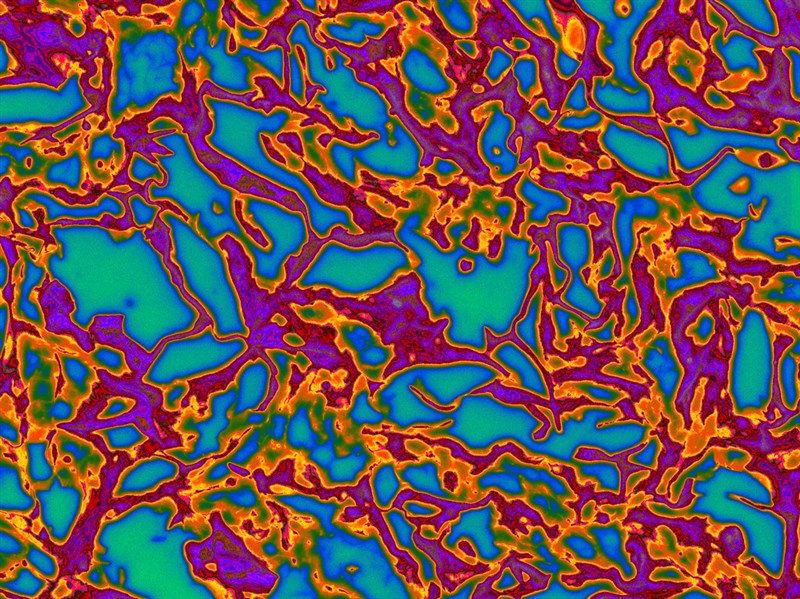
What is it About?
Glycation is one of the major processes responsible for
skin aging through induction of the detrimental formation
of advanced glycation end-products (AGEs).
AGEs alter skin physiology by impairing deposition,
organization and physicochemical properties of dermal
extracellular matrix as well as affecting epidermal
keratinocyte differentiation.
3D GLYCAging Skin is a new and unique glycated full-thickness skin equivalent model with a continuous cellular induction of AGEs production during its full reconstruction in order to reproduce as close as possible the in vivo situation.
3D GLYCAging Skin, a chronic glycation induced at cellular level
Studies about glycation employing skin tissue-engineering strategies rely on 3D constructs based on preglycated
collagen further seeded with skin cells. The major limitation of these models is that only the
ECM proteins are glycated, whereas glycation exerts direct effects on cells and their cytoskeleton.
Therefore, LabSkin Creations' team developed 3D GLYCAging model: a new cell culture system with a
continuous long-term induction of AGEs formation at cellular level using an optimized treatment with
glyoxal/methylglyoxal mixture.
Non Glycated
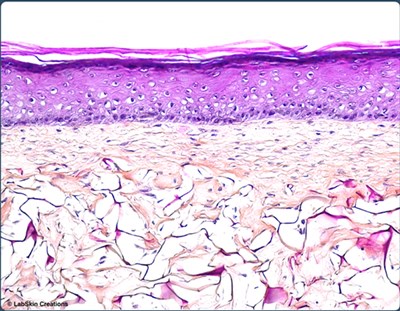
Glycated
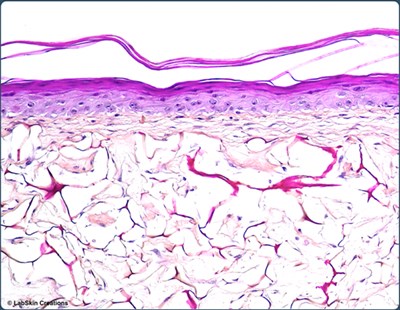
Glycated + Aminoguanidine
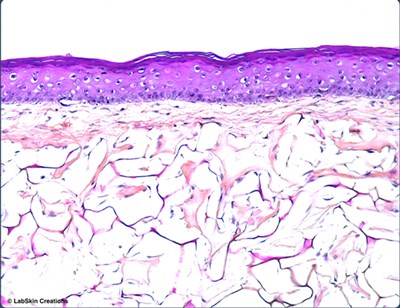
3D GLYCAging skin model exhibits an altered epidermal differentiation with fewer differentiated layers and a reduction of ECM dermal deposition. Treatment with aminoguanidine causes an attenuation of this phenomena resulting in a phenotype that closely resembles the non glycated control.
Non glycated
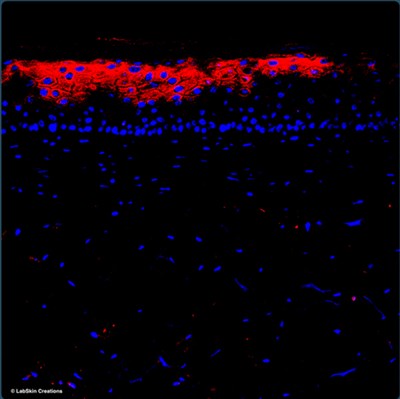
Glycated
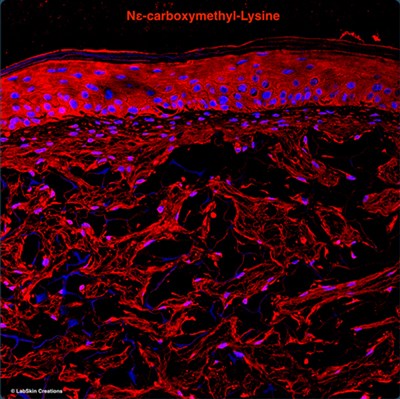
Glycated + Aminoguanidine
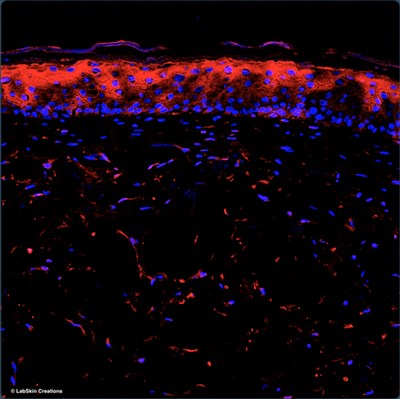
Our continuous glycation protocole induces expression of carboxymethyllysine in dermal and epidermal compartments and, consequently, an aging phenotype consisting of poor stratification of epidermal layers and poor deposition of dermal matrix.
A responsive model to reverse the effect of glycation damages
AGEs production in skin cells is known to promote stiffness and loss of elasticity through their buildup in connective tissue. When glycated, cytoskeleton of fibroblasts is reorganized and vimentin appears as a specific target.
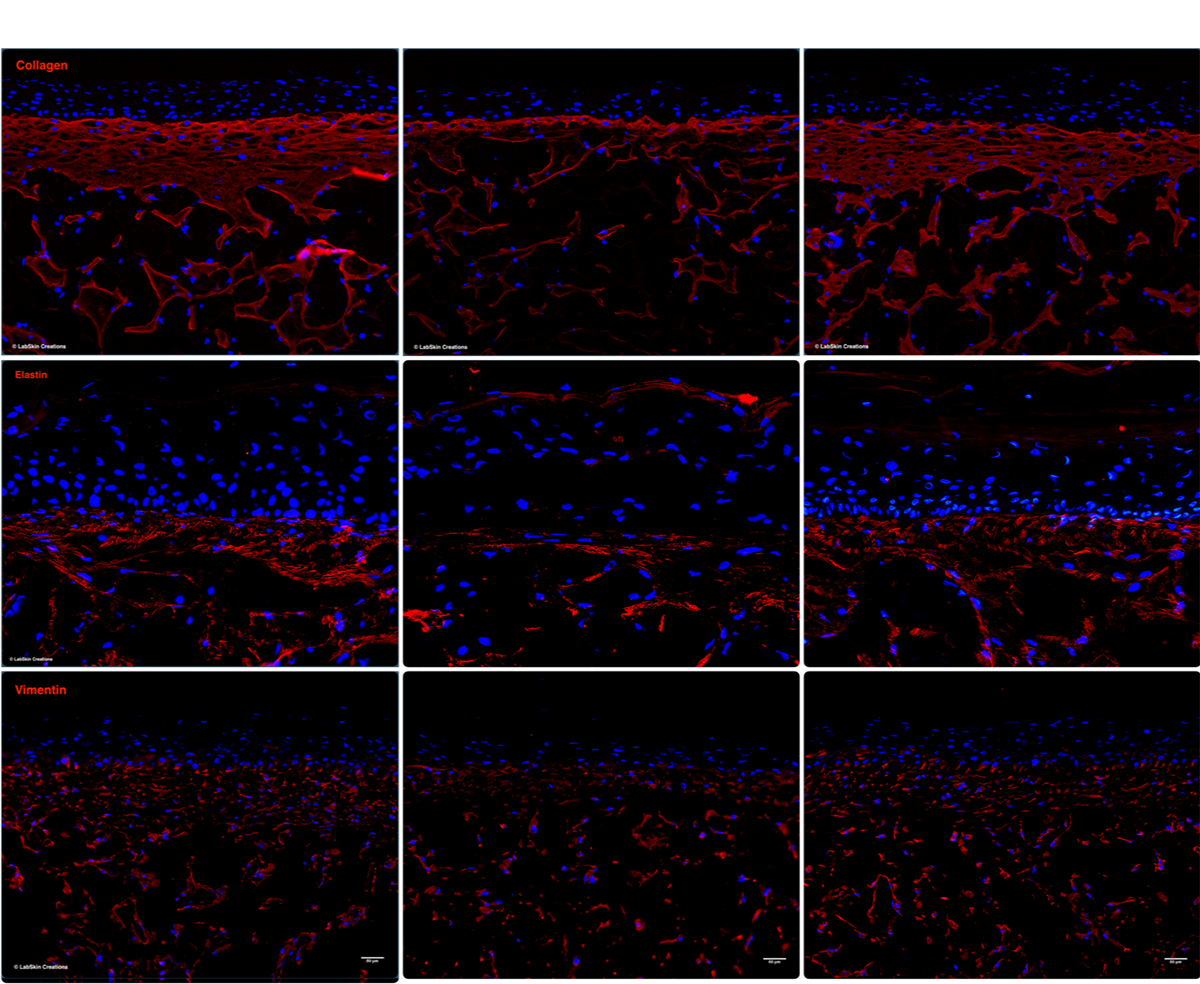
LabSkin glycation protocole induces a signifiant modification of the expression of the main ECM-related proteins in 3D, which can be reversed by the addition of aminoguanidine demonstrating the functionality of 3D GLYCAging skin model.
Melanogenesis and AGE, the ultimate innovation in the glycation field
Besides their role in aging, AGEs promote melanogenesis and significantly influences skin pigmentation. Therefore, LabSkin Creations steps further by developing a pigmented glycated 3D skin model to study the impact of AGEs on melanogenesis.
Non Glycated
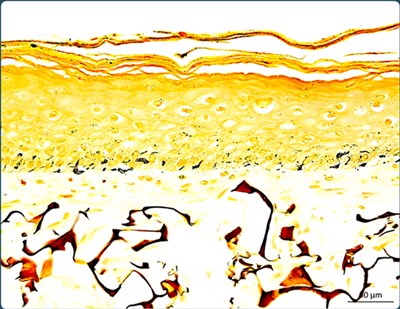
Glycated
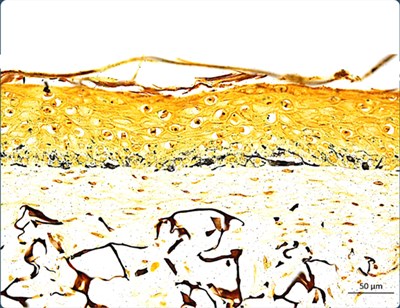
Glycated + Aminoguanidine
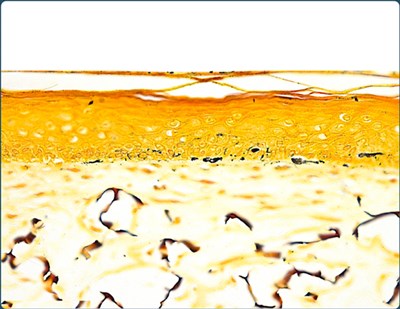
3D pigmented GLYCAging model exhibits a much higher pigmentation level than its control.
This phenomenon can be reversed by the addition of aminoguanidine.
3D GLYCAging Skin based on continuous glycation formation is an effective model to
evaluate cellular interaction and ECM changes in the aging skin, as well as a predictive
platform for the evaluation of anti-AGE compounds.







